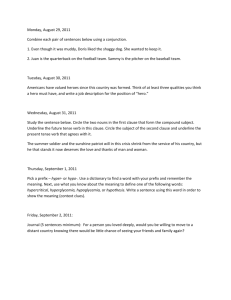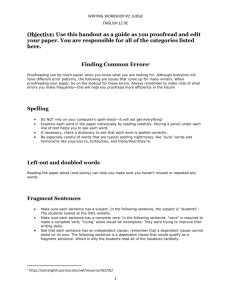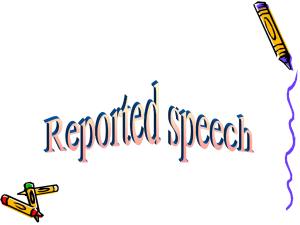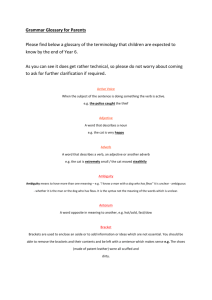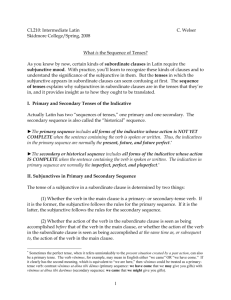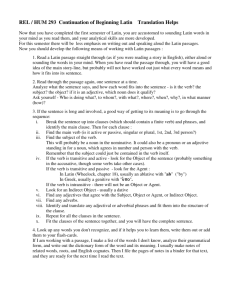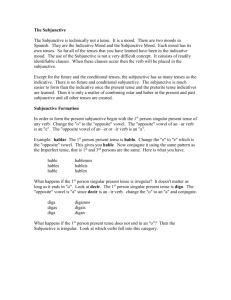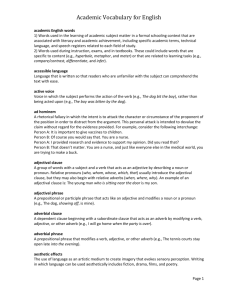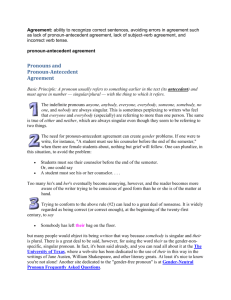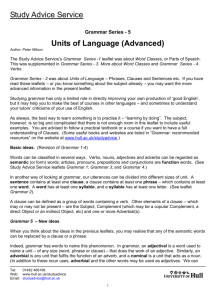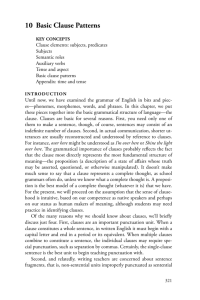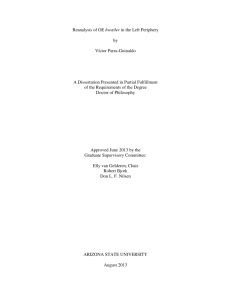Editing Symbols for ESL 042
advertisement
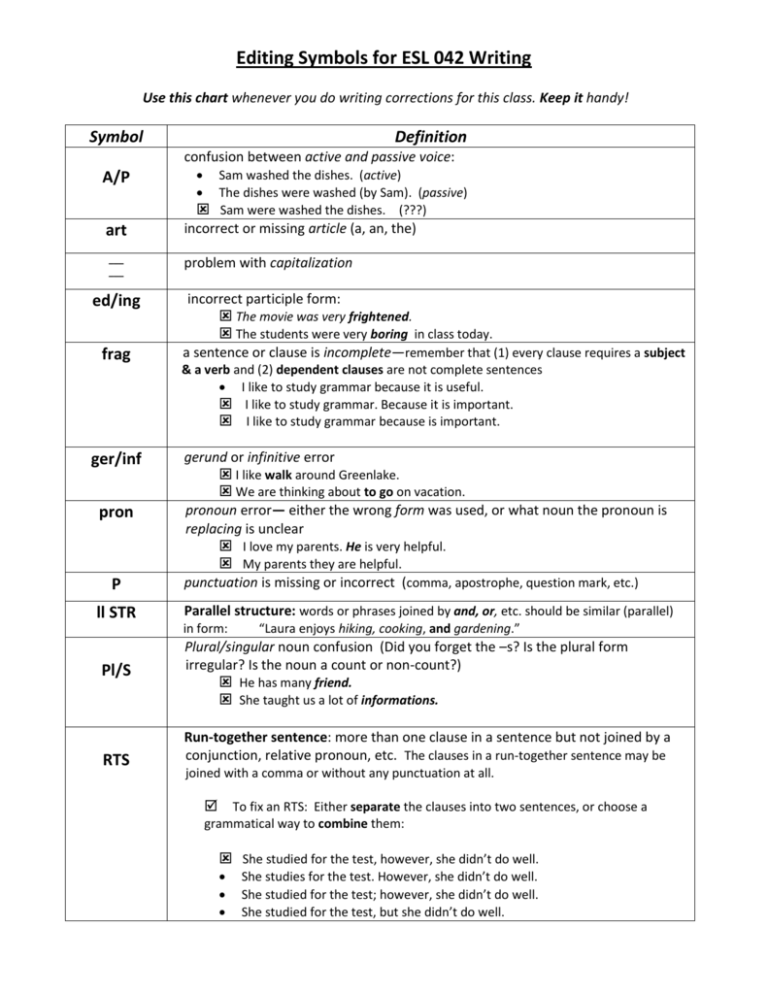
Editing Symbols for ESL 042 Writing Use this chart whenever you do writing corrections for this class. Keep it handy! Symbol Definition confusion between active and passive voice: A/P Sam washed the dishes. (active) The dishes were washed (by Sam). (passive) Sam were washed the dishes. (???) art incorrect or missing article (a, an, the) ___ ___ problem with capitalization ed/ing frag incorrect participle form: The movie was very frightened. The students were very boring in class today. a sentence or clause is incomplete—remember that (1) every clause requires a subject & a verb and (2) dependent clauses are not complete sentences I like to study grammar because it is useful. I like to study grammar. Because it is important. I like to study grammar because is important. P gerund or infinitive error I like walk around Greenlake. We are thinking about to go on vacation. pronoun error— either the wrong form was used, or what noun the pronoun is replacing is unclear I love my parents. He is very helpful. My parents they are helpful. punctuation is missing or incorrect (comma, apostrophe, question mark, etc.) ll STR Parallel structure: words or phrases joined by and, or, etc. should be similar (parallel) ger/inf pron Pl/S RTS in form: “Laura enjoys hiking, cooking, and gardening.” Plural/singular noun confusion (Did you forget the –s? Is the plural form irregular? Is the noun a count or non-count?) He has many friend. She taught us a lot of informations. Run-together sentence: more than one clause in a sentence but not joined by a conjunction, relative pronoun, etc. The clauses in a run-together sentence may be joined with a comma or without any punctuation at all. To fix an RTS: Either separate the clauses into two sentences, or choose a grammatical way to combine them: She studied for the test, however, she didn’t do well. She studies for the test. However, she didn’t do well. She studied for the test; however, she didn’t do well. She studied for the test, but she didn’t do well. sp SVA spelling mistake—add this word to your spelling list and learn to spell it correctly Subject-verb agreement: a verb must agree with its subject T an error with the tense of a verb vf an error with the form of a verb v? Where is the verb? I can’t find it. (This error could also be called a fragment wf word form—use the correct part of speech to do the job ? because a clause without a verb is not complete.) Huh? Unclear—I don’t understand—try to explain it another way Do-or-Die List Good writing takes time and requires editing skills. To move up to ESL 051 next quarter, you must be able to follow these basic rules consistently whenever you write: Always add an –s to simple present tense verbs with a third-person singular subject (he, she, it). By this level, you should know the name of the tense you are using and the reason you chose that tense for your sentence. (There should always be a reason; you shouldn’t just be guessing and hoping you’re right!) Use a base form (the basic form of a verb you find in a dictionary) after a modal (will, can, should, etc.) or in an infinitive (to + base form). BE + Base Form is not possible in English; there is no tense formed that way. Since it is never correct, you should never use it. Every clause should have a subject and a verb. If you want to have more than one clause in your sentence (and you do), combine them with conjunction or relative pronoun. Use your dictionary so that your writing has very few spelling errors. Make sure that your paragraph has a clear topic sentence and that you support and develop this main idea in the rest of your paragraph. Follow the directions. What is the difference between a clause and a phrase? clause— _________________________________________________________ phrase— _________________________________________________________
